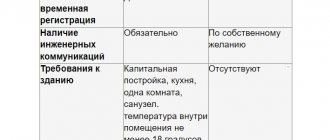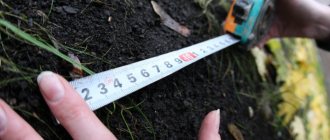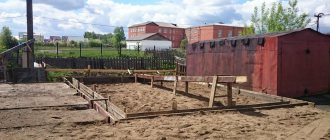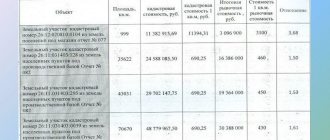Home / Real estate / Land / Ownership / Forms of ownership
Back
Published: 11/16/2017
Reading time: 5 min
0
599
For the rational use of the country's land fund, the legislation defines the requirements for the permissible permitted size of a land plot owned. The size of such a plot depends on the area where the plot is located and its permitted use.
- Laws
- Acceptable sizes of plots for foreign citizens
Laws
Previously there was Art. 33 of the Land Code (LC), which stated that the permissible sizes of plots intended for gardeners, farmers, livestock breeders or summer residents were established by the laws of the constituent entities of the Russian Federation. At the same time, the sizes of plots for individual housing construction and personal subsidiary plots (LPH) were determined by acts of local authorities. In order to simplify the regulation of rights and eliminate duplication, this article has now been removed.
At the same time, for areas for which there are town planning regulations, the permissible dimensions are given in these documents (clause 1 of Article 11.9 of the Land Code).
These regulations, along with the types of permitted uses, indicate the maximum permissible area of the site.
These town planning acts are municipal documents and are valid only in a certain territory.
In territories not related to the areas of application of these regulations, the size of plots will be determined according to the Land Code and other laws (clause 2 of Article 11.9 of the Land Code). The territories where there are no urban planning regulations, along with many other territories, include agricultural lands.
For such lands, the permissible plot sizes are regulated by the Land Code, as well as the law “On the turnover of agricultural lands” (No. 101-FZ of 2001) and the law “On private plots” (No. 112-FZ of 2003).
Plots for gardening
Vegetable gardening is one of the types of permitted activities on land plots belonging to the category:
- Agricultural land;
- Lands of populated areas.
Plots for gardening can either belong to citizens as property rights, or be provided to them by local municipal authorities on a long-term lease.
Many garden lands are owned by citizens on the basis of perpetual use or lifelong ownership.
According to the All-Russian Classification of Types of Permitted Activities, in areas with a designated purpose, gardening can be carried out:
- Growing vegetables and potatoes;
- Growing melons;
- Growing berries and fruits;
- Construction of non-permanent outbuildings;
- Installation of temporary cabins for living without a foundation.
Growing perennial fruit trees (apple trees, pears, etc.) on a garden plot is not allowed.
It is important to take into account that the construction of temporary buildings is possible only on plots for gardening that belong to the lands of urban settlements if there is an appropriate zonal distribution. On field sites classified as agricultural land, the construction of temporary housing is prohibited.
Acceptable sizes
The maximum sizes of individual housing construction plots are established by acts of local authorities. For example, in various areas of the Moscow region, these plot sizes for individual housing construction vary from 0.15 hectares in many regional centers (Voskresensk, Dmitrov, Naro-Fominsk) to 0.4 hectares (Shchelkovo, Ramenskoye).
According to Art. 4 of Law No. 112-FZ, the maximum size of a plot for private household plots is established by local authorities. This value is defined as 0.5 hectares. If necessary, the size of such a site can be increased by a subject of the Russian Federation, but not more than 5 times.
For example, according to the law of the Moscow Region (Law No. 23/96-OZ of 1996), it is allowed to have a plot for private household plots of 0.5 hectares on the territory of a settlement and a plot of 2 hectares outside the settlement. In Tula (law No. 456-ZTO, 2004), a plot for private household plots can have an area of up to 1 hectare.
The maximum maximum sizes of agricultural land plots provided for ownership also depend on the type of their permissible use.
For example, in the Moscow region these dimensions are defined in law No. 063/2003-03. According to this law, the sizes of the plots are equal:
- for a farm - 40.0 hectares;
- for gardens - 0.15 hectares;
- for vegetable gardens - 0.1 hectares;
- for dachas - 0.25 hectares.
Sites for foreign citizens
According to clause 5 of Article 38, plots of state or municipal land for a fee can become the property of foreign citizens or legal entities. restrictions on the size of plots for foreign citizens .
But in accordance with the law, foreign individuals or legal entities can have agricultural land only in the form of a lease.
Foreigners also cannot acquire ownership of plots located in border and other special areas.
Calculating maternity benefits is a responsible matter. We recommend that you first read our article to do this correctly. How to correctly calculate your sick leave if you are pregnant - read here.
You will find out what the maximum period of time you can count on when receiving sick leave is if you follow the link and read our material.
Documentation
To transfer land from the agricultural category to land in populated areas, an individual will need the following documents:
- Cadastral passport;
- Extract from the real estate register on the ownership of the plot;
- Results of environmental assessment;
- Copy of the passport.
An environmental assessment is ordered from the regional environmental management department and completed within 2-4 months.
An extract from the Unified State Register and a cadastral passport can be ordered from Rosreestr or a multifunctional center by paying a state fee of 300 rubles for the extract and 700 rubles for the cadastral document.
Registration of a house into private ownership on a rented land plot
The stages of registering a house are as follows:
- production of technical documentation in BTI;
- assigning an address to a house in an architectural office;
- Registration of a house in Rosreestr for cadastral registration or filling out a declaration (under the dacha amnesty).
Is it possible to build a house on land if it is rented and how to register ownership of the building, read this article.
How to register land ownership?
If the land for gardening is in a non-profit partnership, then it can be registered as ownership free of charge if the city authorities provided the territory to this partnership before October 2001. To register a plot of land, you will need the following documents:
- Certificate of right to use the site (membership in a partnership);
- Cadastral document;
- Copy of Russian passport;
- An extract on the presence of encumbrances from the legal register.
In the absence of a cadastral passport, it is enough to draw up a diagram of the boundaries of the plot and have it certified by the management of the gardening partnership to which the plot belongs.
A certificate of encumbrances can be ordered at the MFC by applying with a passport and paying a fee of 300 rubles.
With these documents, you must contact the municipal land management department and write an application for the provision of ownership of a plot for gardening.
The text of the application begins with the name of the appeal body and the full name of the official. Authorized person to consider such applications.
Next, the applicant introduces himself, indicates his passport and contact information, after which he sets out a request for ownership of a plot for gardening, and indicates information about the plot:
- Address landmarks;
- Cadastral number;
- Land category;
- Square;
- Type of permitted land use;
- The type of right under which the land is exploited.
The application is considered within a month, during which employees of the land management department make a decision on whether to provide ownership of the plot for gardening or to refuse it.
If the plot is not demarcated, the land department preliminarily agrees on the transfer of ownership of the plot, after which it initiates cadastral work to establish boundaries and issues a cadastral passport for the plot. All demarcation costs are paid at the expense of the administration, in accordance with Art. 12 Federal Law No. 93 (law on “dacha amnesty”).
After the decision to provide ownership of a plot for gardening, the applicant submits a copy of this decision to the MFC, attaching to it :
- Cadastral passport;
- A copy of the Russian passport;
- Receipt of payment of the fee (100 rubles).
10 days after contacting the MFC, information about the owner of the plot for gardening is entered into the unified real estate register. If it is necessary to confirm ownership of a plot, the owner can order an extract from the Unified State Register of Real Estate from Rosreestr or the MFC.
VTB 24 mortgage - how profitable are their offers? You can read how to correctly register ownership rights in our article.
You can learn about all the nuances of allocating a share from common property in our thematic article.
Changing the VRI of a city site
If the plot for gardening belongs to urban lands, then in order to change its permitted land use to low-rise personal construction, you must contact the city administration with an application, in the text of which indicate:
- Full name, passport and contact details;
- The need to change the permitted land use for construction;
- Current and desired VRI;
- Land category;
- Address landmarks of the site and its cadastral number.
After accepting the application, the authorities will schedule public hearings, to which neighboring land users will be invited. Based on the results of the hearings, the decision to change the VRI of the site for vegetable gardening will be made by the commission based on the development plan for the urban area and the comments made at the hearing.
All expenses for organizing public hearings are at the expense of the applicant. The decision to change the VRI of the site must be made by the commission within 30 days after announcing the date of the hearing.
If the commission’s decision is positive, an act on changing the type of land use of the site up and appropriate changes are made to the Unified State Register; if refused, the applicant can challenge the commission’s decision in the judicial authorities (Clause 12, Article 39 of the Civil Code of the Russian Federation).










